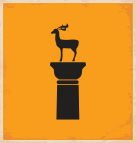
MONASTERY OF PANAGIA TSABIKA

It is located on the eastern coast of the island, before village Archangelos. It consists of the upper and lower Monastery. The upper Monastery is on the top of the hill, on the east of the Rhodes-Lindos highway, while the lower Monastery is on the west of the highway.
A path of about 500 meters in length, which passes through a cypress wood reaches the hill, at an altitude of 320 meters, where the oldest monastery of Panagia Tsabika, the Lady, is situated.
The new Monastery was renovated in 1760 AD. It is a dodecanesean style temple, with a floor made of pebbles. The wooden-crafted temple is of exquisite art, older than the 17th century AD.
The name Tsabika, according to the tradition, is due to the word of the local dialect “tsaba”, which means sparkle, and is associated with the manner in which the icon was discovered.
A shepherd was sitting at the fountain of Aimachios across the mountain, when he saw sparkles (tsabes) on the peak. The light remained in the same position for a second night and a third night, and the shepherd with his fellow villagers, armed, ascended to the peak, where they saw a silver icon of Panagia on the cypress, and a lit candle in front of it.
This fact was disseminated everywhere. In Cyprus an icon of Panagia had been lost along with the candle. Commissioners from Cyprus came to Archangelos, recognized the icon and returned it home. However, the icon came back to the peak of the mountain. The Cypriots came again and took the icon. To make sure that it was the same icon, they burnt a small part of its wood on the back side. The mark is still preserved today. On the third time that the icon returned to the hill, the church was built, dedicated to Panagia Tsabika, the Lady.
The icon is currently in “lower” Panagia Tsabika, and is considered to be miraculous for childless women who pray to the Virgin to give them a child and promise to baptize their child there and given them the name Tsabikos or Tsabika. This is a very popular name in Rhodes. One of the oldest miracles of Panagia is the one associated with the large plots of the Monastery around the monastery, which belonged to a Turkish Pasha. His wife, upon hearing about Panagia, prayed and ate the wick that burned on the candle of the icon, got pregnant and the baby that was born held the wick inside his fist. Her husband was convinced that it was a miracle and gave all the plots to the Monastery.

1. Click the «Get Directions» button below . Enter the home position in «A:» . The destination position «B:» is already completed.
2. Click on ‘GET DIRECTION’ button.
To change the transportation mode, click on the corresponding icon for transport by car, public transport, cycling, hiking, or plane.
















